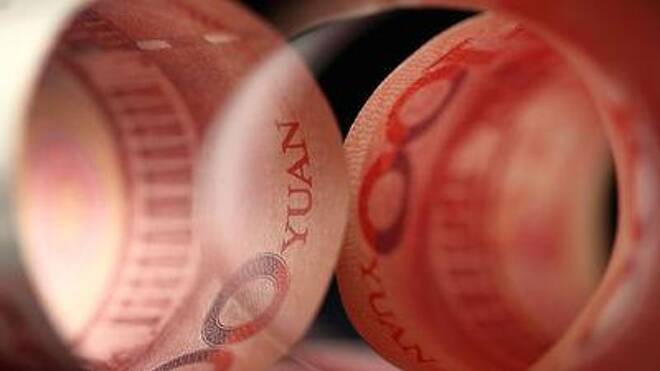Advertisement
Advertisement
Chinese Devaluation Taking Its Toll On Asian Currencies
By:
Asian currencies tumbled on Wednesday morning, many reaching their lowest levels this year. This time it was not the strength of the US dollar which is
Asian currencies tumbled on Wednesday morning, many reaching their lowest levels this year. This time it was not the strength of the US dollar which is trading in the red this morning at 97.17 easing 6 points as investors wonder what the effects of the Chinese currency devaluation will have on the Fed’s interest rate increase decision. The US Dollar Index strengthened by 0.2 percent yesterday owing to the surprising move by the Chinese regulators of devaluing Yuan by nearly 2 percent that created jitters across Asian markets and boosted the demand for the greenback due to its safe-haven attributes.
However, mixed economic data releases from the nation that showed rise in unit labor costs more than expected along with disappointing non-farm productivity came in below forecasts kept the US Dollar Index pressurized.
China’s 2 percent devaluation of the yuan on Tuesday pushed the dollar higher and hit Wall Street and other global equity markets as it raised fears of a new round of currency wars and fed worries about slowing Chinese economic growth. U.S. stock indexes slumped more than 1 percent and stocks also fell in Asia and Europe as investors contemplated the implications of a move designed to support China’s slowing economy and exports. China’s move, which the central bank described as a “one-off depreciation” based on a new way of managing the exchange rate that better reflected market forces, triggered the yuan’s biggest fall since 1994, pushing it to its weakest against the dollar in almost three years.
In a potentially worrisome sign, China’s offshore yuan , a more liquid instrument traded out of Hong Kong, fell 2.9 percent, exceeding the fall in the onshore yuan. It suggests more possible losses for the onshore currency, as the Hong Kong-traded yuan tends to act as a precursor to the onshore.
China began devaluing its currency against the US on Tuesday by dropping it 1.9 per cent against the US dollar, the biggest drop on record. At the time, the People’s Bank of China described it as a “one-off move”.
The Australian dollar on Tuesday fell from an intra-day high of 0.7436 to 0.7317 and all the way to 0.7285 overnight. This morning the Aussie was down 51 points to 0.7253 its lowest level in years. Commodities are priced in USD and are not more expensive for China to import. Given the potential for this devaluation to add further pressure to an already reeling iron ore market, we could see the Aussie under significant pressure over the short term. The NZD followed the Aussie down the tubes to trade at 0.6505 giving up 30 points.
The Japanese yen also weakened this morning falling 6 points against the US dollar to 125.19 while against the euro the JPY is trading at 138.46 gaining 30 points. Just a few days since Bank of Japan Gov. Haruhiko Kuroda brushed aside the recent economic slowdown as a blip, the economy is showing a fresh sign of trouble.
The country’s consumer sentiment dropped 1.4 points from the previous month to 40.3 in July, the biggest drop in 1½ years, according to data released Monday by the Cabinet Office. Consumers grew more pessimistic about income, employment and asset prices, in contrast with Mr. Kuroda’s assertion Friday that consumption is likely to rebound as household sentiment “continues to improve.”
About the Author
Barry Normanauthor
Did you find this article useful?
Latest news and analysis
Advertisement
